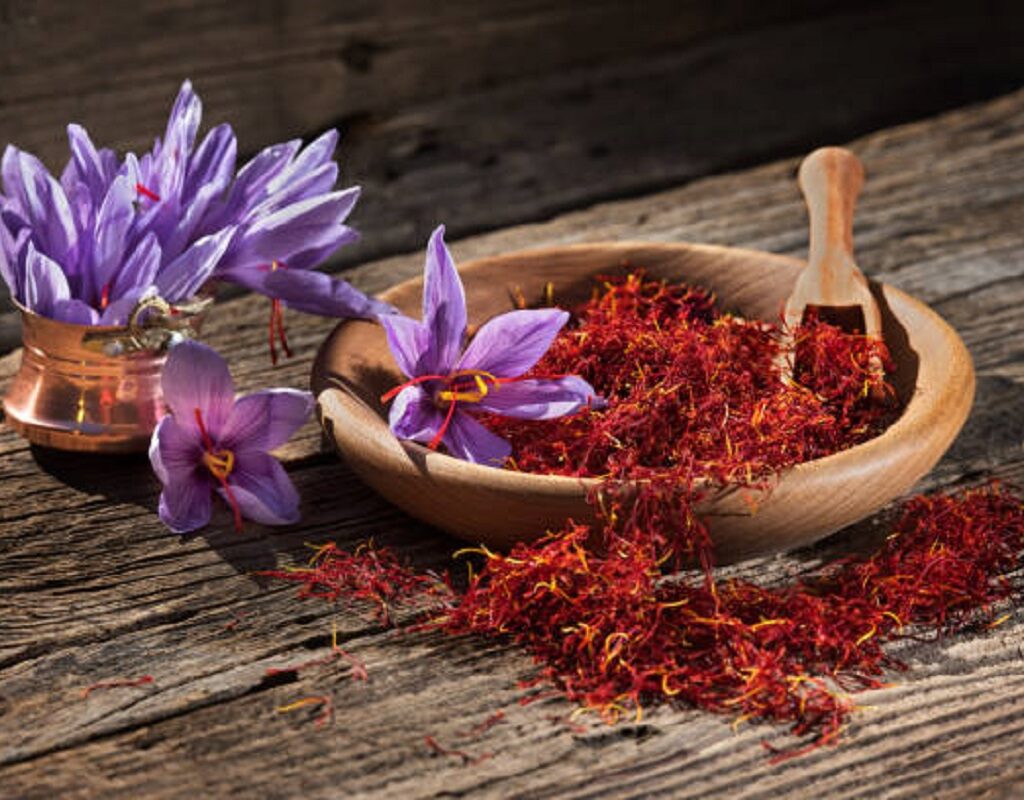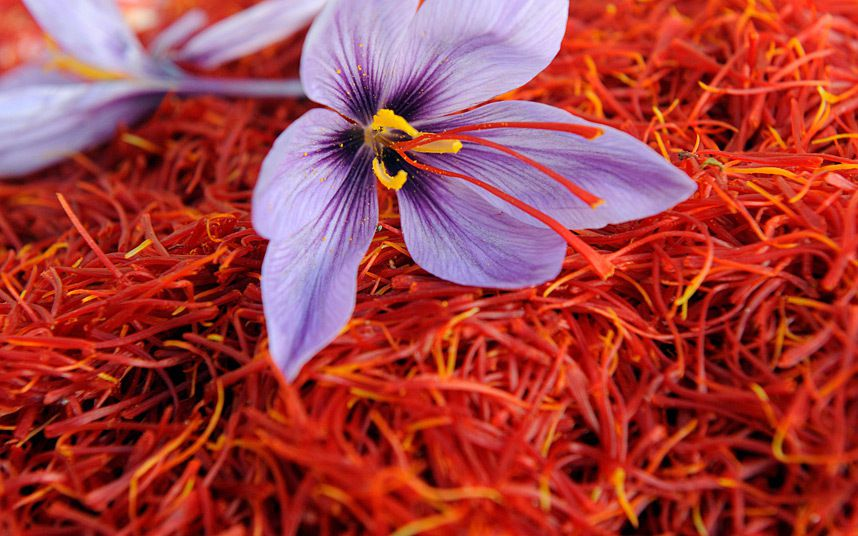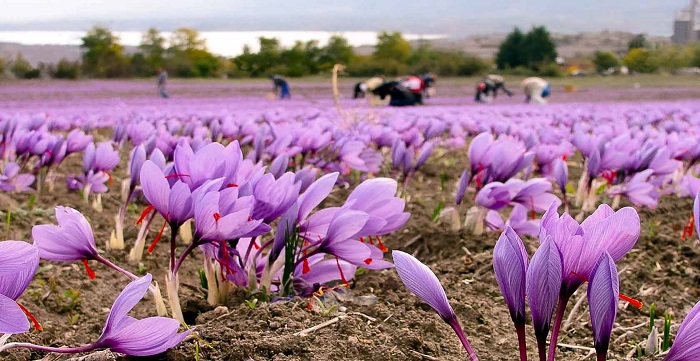Saffron, often referred to as “red gold,” is the world’s most expensive spice by weight. Its vibrant crimson threads and distinct aroma have made it a prized commodity for centuries, used in culinary, medicinal, and cosmetic applications. The labor-intensive harvesting process—where thousands of delicate stigmas must be handpicked from Crocus sativus flowers—contributes to its rarity and high price.
Global saffron production is concentrated in a few key countries, with climate, tradition, and expertise playing critical roles. In this article, we will explore the top saffron-producing nations worldwide, their contributions, production methods, and global impact.
Why Saffron Is So Valuable

Before diving into the leading producers, it is important to understand why saffron holds such a high status in global markets:
- Labor-Intensive Harvesting: Each flower produces only 3 stigmas, requiring over 150,000 flowers to yield 1 kilogram of saffron.
- Climatic Requirements: Saffron grows best in semi-arid regions with well-drained soils and a distinct climate.
- Multiple Uses: From gourmet dishes like paella and biryani to herbal medicine, skincare, and even textile dyeing, saffron’s demand spans industries.
- Cultural Significance: In countries such as Iran, India, and Spain, saffron has deep cultural and traditional importance.
1. Iran – The Undisputed Leader
- Global Share: Around 85–90% of the world’s saffron
- Key Regions: Khorasan province, especially Mashhad, Gonabad, and Torbat Heydariyeh
- Annual Production: Over 300 tons
Iran is by far the largest saffron producer globally. Its favorable semi-arid climate, traditional farming practices, and skilled labor make it the dominant player in saffron markets. Iranian saffron is known for its deep color, strong aroma, and high crocin content (the compound responsible for saffron’s color).
Despite international sanctions and trade restrictions, Iranian saffron remains in high demand, often exported indirectly through third countries like the UAE and Spain.
2. India – Home of Kashmiri Saffron
- Global Share: About 6–7% of total production
- Key Region: Jammu and Kashmir (especially Pampore, known as the “Saffron Town of India”)
- Annual Production: Around 15–20 tons
Indian saffron, especially Kashmiri saffron, is world-famous for its dark maroon-purple hue, rich aroma, and higher coloring strength. In 2020, Kashmiri saffron received a Geographical Indication (GI) tag, protecting its authenticity and global recognition.
Although production has declined due to climate change, urbanization, and reduced cultivation, Kashmiri saffron remains one of the most sought-after varieties worldwide.
3. Spain – Europe’s Saffron Hub
- Global Share: Around 3–4%
- Key Regions: Castilla-La Mancha (especially La Mancha, which has its own Protected Designation of Origin (PDO) saffron)
- Annual Production: 1–2 tons (official), but Spain re-exports larger amounts by importing Iranian saffron
Spain has a rich history with saffron cultivation, dating back to the Arab influence during the Middle Ages. Spanish saffron, particularly La Mancha saffron, is celebrated for its intense flavor and superior coloring ability.
Though domestic production is relatively small, Spain is a major exporter, as it imports large volumes of Iranian saffron, repackages it, and sells it under Spanish labels at premium prices.
4. Afghanistan – An Emerging Player

- Global Share: Around 2–3%
- Key Regions: Herat province
- Annual Production: Nearly 10–15 tons
Afghanistan has recently positioned itself as a rising saffron producer, with government support and international aid programs promoting saffron as an alternative to opium poppy cultivation.
Afghan saffron has won international quality awards, and due to its organic cultivation methods, it has become popular in Europe and the U.S. The saffron industry is also creating jobs for rural women, boosting socio-economic development.
5. Greece – Mediterranean Quality
- Global Share: Less than 1%
- Key Region: Kozani (home to Krokos Kozanis, which has a PDO certification)
- Annual Production: About 6–7 tons
Greece produces saffron with high aroma and coloring strength, considered one of the best in Europe. While production volumes are small compared to Iran or India, Kozani saffron is prized for its quality and is exported mainly within Europe.
6. Morocco – Traditional North African Producer

- Global Share: Less than 1%
- Key Region: Taliouine
- Annual Production: 2–3 tons
Morocco has been cultivating saffron for centuries in the Atlas Mountains. Taliouine saffron is known for its unique aroma and quality. While small in scale, Moroccan saffron plays an important role in local cuisine and is exported to European markets.
7. Italy – Small but Premium
- Global Share: <1%
- Key Regions: Abruzzo, Sardinia, Tuscany, and Umbria
- Annual Production: 500–600 kilograms
Italian saffron, particularly L’Aquila saffron (Abruzzo), holds a PDO certification and is highly valued in European gastronomy. Though production is modest, Italian saffron is marketed as a premium artisanal product.
Other Saffron-Producing Nations
Besides the leading producers, several countries cultivate saffron on smaller scales:
- Turkey – Safranbolu region is famous for saffron heritage.
- China – Produces small amounts but increasing due to demand.
- Egypt & Azerbaijan – Limited but growing saffron industries.
Global Trade and Market Dynamics
- Export Leaders: Iran, Spain, and Afghanistan dominate saffron exports.
- Major Importers: UAE, Saudi Arabia, India, the U.S., and European countries.
- Price Range: $500 to $5,000 per kilogram depending on quality, origin, and purity.
Fraud and adulteration remain major challenges in the saffron industry. Powdered saffron is sometimes mixed with turmeric or dyed fibers, making authenticity checks vital. This has led to an increasing demand for certified saffron with GI and PDO tags.
Challenges Facing Global Saffron Production

- Climate Change – Rising temperatures and irregular rainfall are reducing yields in regions like Kashmir.
- Adulteration & Fraud – Fake saffron threatens both consumer trust and farmer incomes.
- Labor Costs – Handpicking flowers remains highly labor-intensive.
- Market Dependency – Heavy reliance on Iranian production creates global supply risks.
Future of Saffron Production
The saffron industry is evolving with:
- Technological Interventions – Controlled greenhouse saffron farming.
- Diversification – Expanding production in Afghanistan, Morocco, and Greece.
- Value-Added Products – Saffron teas, extracts, and cosmetics boosting demand.
- Sustainability Initiatives – Supporting organic cultivation and fair trade.
Conclusion
Saffron remains a symbol of luxury, tradition, and cultural identity. While Iran dominates global production, countries like India, Spain, Afghanistan, and Greece add diversity and unique qualities to the market. Each saffron-producing nation contributes its own history, flavor profile, and economic importance to the global saffron industry.
With rising global demand and renewed focus on authenticity, sustainability, and innovation, saffron production is likely to expand beyond its traditional heartlands, ensuring that this precious spice continues to enchant kitchens and cultures worldwide.






















































